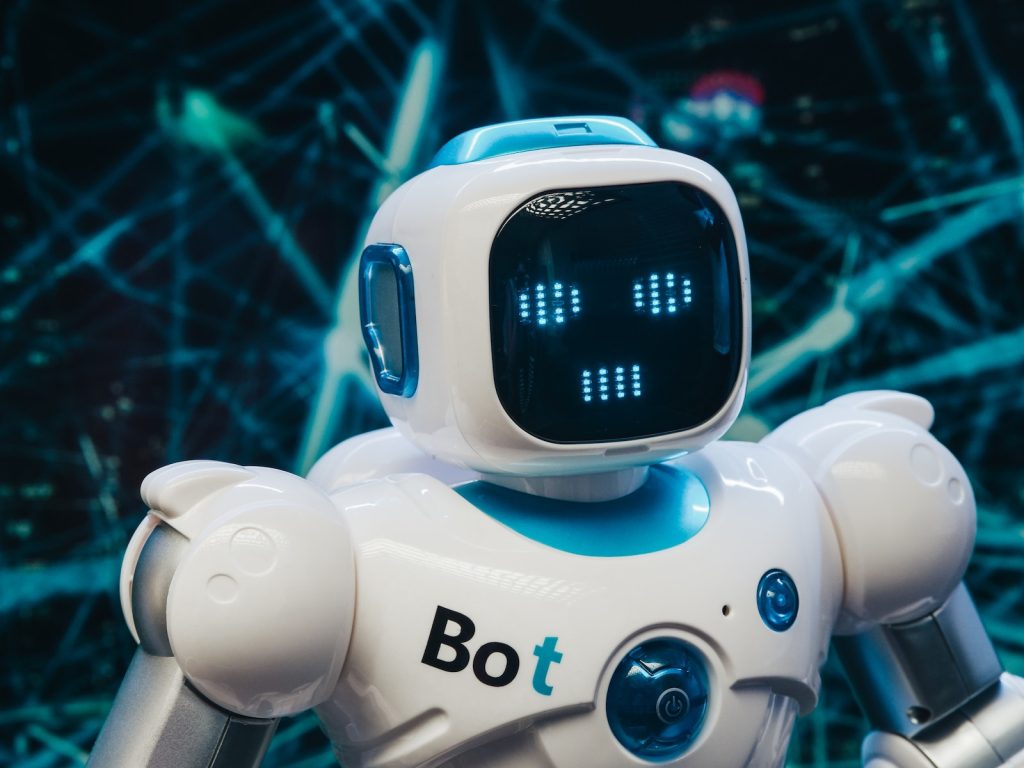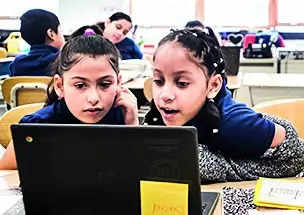Table of Contents

On a recent morning, Cheryl Drakeford, a third-grade teacher at First Avenue Elementary School in Newark, posed a challenging math question on her classroom whiteboard: “What fraction of the letters in the word ‘mathematician’ are consonants?” Drakeford knew that “cuisine” might be an unfamiliar word for some students. So he suggested they ask Khanmigo, a new tutoring bot that uses artificial intelligence, for help.
Then he asked third graders to share the answer with the tutoring bot. A student read, “Consonants are letters of the alphabet that are not vowels.” “The vowels are a, e, i, o and u. All other letters are consonants.” The tech industry’s hype and doomsday predictions around advanced chatbots like ChatGPT prompted many schools this year to block or limit the use of the devices in classrooms. Newark Public Schools is taking a different approach.
It is also one of the first school systems in the US to pilot test KhanMigo, an automated learning aid developed by Khan Academy, an education nonprofit. Newark has essentially volunteered to be a guinea pig for public schools across the country. Proponents argue that classroom chatbots could democratize the idea of tutoring by automatically customizing students’ responses, allowing them to work on lessons at their own pace.
Critics warn that the bots, which are trained on vast databases of texts, can fabricate false information to appear credible – making them a risky bet for schools. Officials in Newark, New Jersey’s largest district, said they are carefully testing the tutoring bot at three schools. “It’s important to introduce our students to this, because it’s not going away,” said Timothy Nellegar, director of educational technology at Newark Public. The schools said “But we need to find out how it works, the risks, the good and the bad.” Newark students began using automated learning aids in May. Reviews so far have been mixed.
Tito Rodriguez, a statistics teacher, described the bot as a useful “co-teacher” that allowed him to spend extra time with children who needed guidance. But in Drakeford’s math class, the bot’s responses sometimes sounded less like suggestions and more like direct answers. “This is our biggest concern,” said Alan Usherenko, the district’s special assistant for schools. “We want them to know how to tackle a problem on their own, use their critical thinking skills. Khan Academy said: “Our engineering team corrected the AI so that it no longer responds.”
AI tutoring bots pros and cons
AI tutoring bots offer several advantages and disadvantages in the realm of education. Let’s explore the pros and cons of these innovative tools:
Pros:
- Personalized Learning: AI tutoring bots can adapt to the individual needs of students, offering personalized instruction based on their learning styles, preferences, and knowledge gaps. This customized approach enhances the effectiveness of learning and increases student engagement.
- Accessibility and Availability: AI tutoring bots are accessible anytime and anywhere, providing students with round-the-clock support. This flexibility allows learners to access educational resources and receive assistance whenever they need it, regardless of geographical or time constraints.
- Scalability: AI tutoring bots can cater to a large number of students simultaneously. They have the capacity to handle numerous inquiries, offer feedback, and provide guidance to students at scale, which is especially beneficial in environments with limited human resources.
- Immediate Feedback: These bots can provide instant feedback to students, allowing them to understand their mistakes and correct them promptly. This timely feedback facilitates faster learning, reduces frustration, and helps students progress more efficiently.
- Data-Driven Insights: AI tutoring bots collect and analyze vast amounts of data on student performance, enabling educators to gain valuable insights into students’ strengths, weaknesses, and learning patterns. This data-driven approach can inform instructional strategies, identify areas for improvement, and enhance overall teaching effectiveness.
Cons:
- Lack of Human Interaction: AI tutoring bots cannot replicate the nuanced and empathetic interactions that occur between humans. The absence of human connection may limit the emotional support and personal guidance that some students require, particularly in complex or emotionally challenging subjects.
- Limited Contextual Understanding: Although AI tutoring bots have made significant progress in natural language processing, they may still struggle to grasp complex contextual nuances and understand the subtleties of certain subjects. This limitation can hinder their ability to provide comprehensive explanations in some cases.
- Technical Limitations: AI tutoring bots rely on technology and are susceptible to technical glitches or errors. Connectivity issues, software bugs, or limitations in the AI algorithms can occasionally disrupt the learning experience and hinder the effectiveness of the bots.
- Lack of Adaptability: While AI tutoring bots can personalize instruction to some extent, they may not be able to adapt as effectively as human teachers. Human educators possess a deep understanding of individual student needs and can adjust their teaching strategies dynamically based on real-time observations, which AI tutoring bots currently struggle to replicate.
- Ethical Considerations: The use of AI in education raises ethical concerns. Data privacy, algorithm bias, and the potential for AI to perpetuate existing inequalities are important considerations when implementing AI tutoring bots. Careful attention must be given to ensure transparency, fairness, and inclusivity in their development and deployment.
It is worth noting that AI tutoring bots are not intended to replace human teachers but rather to complement and support traditional educational methods. The combination of human expertise and AI technology can create a powerful synergy that enhances the overall learning experience for students.






Be First to Comment